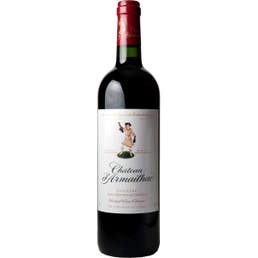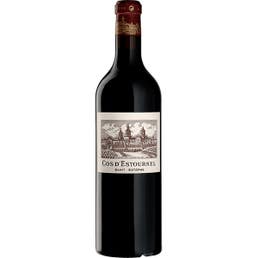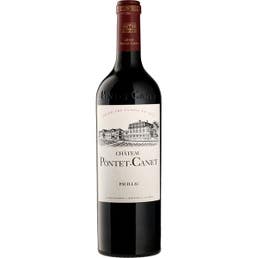Château d’Armailhac 2017
• Domaine: Château d'Armailhac
• Appellation: Pauillac
• Classification: Fifth Growth
• Origin: Left Bank, Bordeaux, France
Château d’Armailhac neighbors the famous First Growth property, Château Mouton Rothschild. This 70-hectare vineyard hosts some very impressive terroir with mixtures of gravel, clay and limestone soil. Here, plantings of Cabernet Sauvignon, Merlot, Cabernet Franc and Petit Verdot thrive in a T-shaped vineyard. More than a few of these vines date all the way back to 1890 and are some of the oldest in all of Bordeaux. The vineyards were previously a part of the vast holdings of Nicolas-Alexandre de Ségur – the renowned Wine Prince - who simultaneously owned several First Growth estates including Château Lafite Rothschild, Château Mouton Rothschild, and Château Latour. Even prior to being classified as a Fifth Growth in 1855, the wines from Château d’Armailhac were renowned throughout France; the second wine often served at local taverns. The wines are friendly examples of excellent Left Bank terroir, and a perfect buy for value-oriented wine lovers.
Château d’Armailhac was initially a part of the vineyards that today comprise Château Mouton Rothschild. It was purchased by the d’Armailhacq brothers who were riverboat captains on the Gironde estuary. The wines were sold under the label Mouton d’Armailhacq, and the Armailhacq family spared no expense trying to churn out wines that were on par with the estate’s illustrious neighbors, Château Pontet-Canet and Château Brane Mouton - which later became Château Mouton Rothschild. Eventually they drove themselves into debt, and in one last ditch effort to revitalize the property, they decided to spend their income on rebuilding a château. They couldn’t afford to finish the property, and to this very day the château stands half-finished. This interesting looking building stands out from the other Pauillac properties piquing the interest of any who are fortunate enough to visit the estate. Eventually Baron de Rothschild purchased it in 1934 and Château d'Armailhac has been a part of the Rothschild holdings ever since.
After purchasing the property, the Baron expanded the vineyards at Château d’Armailhac by 24 hectares. The vines here are generally on the older side – ranging from an average age of fifty years. The estate has some of the greatest quantities of Cabernet Franc in the entire Médoc, and a lot of it is older vines. As the Cabernet Franc vines die off, they continue to increase their holdings of Cabernet Sauvignon. Stylistically they are known for lighter styled Pauillacs wines. This is probably because the majority of the vinification process for their grand vin takes place in stainless steel tanks, and the wines are aged in new oak barrels.
Château d’Armailhac has changed names many times throughout the years including Château Mouton d’Armailhac, Château Mouton-Baron-Philipe, and Château Mouton Baronne. Though many consider the wines of Château d’Armailhac on the lighter side, newer vintages pack a bit more of a powerful Pauillac punch. Regardless, these wines are best consumed when in their youth, and they are remarkably approachable. The later vintages have been steadily climbing in terms of quality, yet prices still remain fair. It is clear this Fifth Growth property is one of the greater values on the Left Bank.
Tasting Notes
"The 2017 d’Armailhac, which was bottled in June 2019, has an attractive bouquet with blackberry and bilberry fruit. The oak is nicely integrated, maybe a little conservative compared to other vintages though that is in keeping with the style of the year. The palate is medium-bodied with grainy tannin, a little "angular" perhaps, with a fine bead of acidity and touches of iron-tinged red fruit on the finish. Probably an earlier drinking d’Armailhac, but one with plenty of character." - Neal Martin, vinous.com, (February, 2020), Rating: 91, Drink: 2021-2035
"Medium to deep garnet-purple colored, the 2017 D'Armailhac comes bounding out of the glass with bold notions of baked plums, redcurrant jelly and crème de cassis plus wafts of violets, dark chocolate and fragrant earth. Medium-bodied, the palate bursts with energetic red and black fruits, framed by ripe, grainy tannins and oodles of freshness, finishing long and vibrant." - Lisa Perroti-Brown, The Wine Advocate (3/16/2020) Rating: 90-92 Drink: 2021-2037
"I loved the 2017 Chateau D'Armailhac, which is a blend of 68% Cabernet Sauvignon, 22% Merlot, 7% Cabernet Franc, and 3% Petit Verdot brought up 16 months in 40% new French oak. It has good ripeness and depth, medium to full body, and terrific notes of cassis, toasted spice, lead pencil, and violets. This classic, ripe, sexy 2017 that has a good spine of acidity and a great finish, all making for a brilliant Pauillac that’s going to benefit from just short term cellaring and keep for 15-20 years." Jeb Dunnuck, 2017 Bordeaux From Bottle (2/26/2020) Rating: 92
| LWIN | 1006090 |
|---|---|
| Stock Status | Out of Stock |
| Appellation | Pauillac |
| Vintage | 2017 |
| Brand | Chateau d'Armailhac |
| Shipping Weight | 3.000000 |










